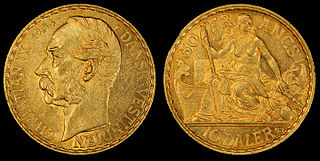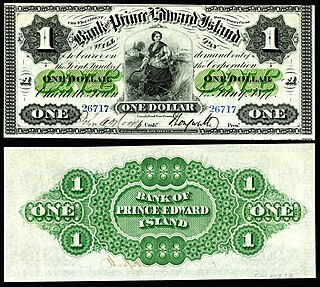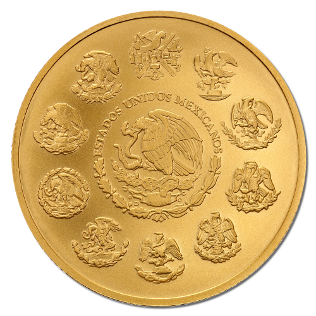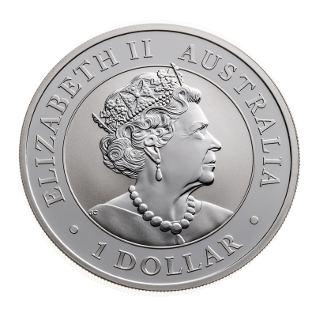
The dinar is the name of the principal currency unit in several countries near the Mediterranean Sea, with a more widespread historical use. The English word "dinar" is the transliteration of the Arabic دينار (dīnār), which was borrowed via the Syriac dīnarā from the Latin dēnārius.

The rupia was the currency of Portuguese India sometime after 1668 until 1958. Prior to 1668, the currency unit was Xerafim. In 1666, the Portuguese administration struck a silver coin calling it double xerafin and this was declared equal to a rupia in circulation in India outside of Portuguese possessions. A xerafim was a convertible subunit of rupia, and it was unique to Portuguese colonies in India. One rupia equalled two xerafims.

The Rupie was the currency of German East Africa between 1890 and 1916, continuing to circulate in the Tanganyika Territory until 1920.

The rixdollar was the currency of British Ceylon until 1828. It was subdivided into 48 stivers, each of 4 duit. Units called the fanam and larin were also used, worth 4 and 9½ stiver, respectively. The currency derived from the Dutch rijksdaalder and stuiver, although the rijksdaalder was worth 50 stuiver.

The Bohemian and Moravian koruna, known as the Protectorate crown, was the currency of the Protectorate of Bohemia and Moravia between 1939 and 1945. It was subdivided into 100 haléřů.

The peso was a currency of Venezuela until 1874. It was subdivided into 10 reales, each of 10 centavos.
The peso was the currency of El Salvador between 1877 and 1919.

The Azorean real, also known as the Azorean Moeda Insulana was the currency of the Portuguese archipelago of the Azores, used until 1931.

The daler was the currency of the Danish West Indies between 1849 and 1917, and of the United States Virgin Islands between 1917 and 1934.

The Liechtenstein krone was the currency of Liechtenstein from 1898 to 1921. The coins are rare, although the banknotes are somewhat more common. The krone was divided into 100 heller. Liechtenstein used the Austro-Hungarian krone and Austrian krone after the dissolution of the Austro-Hungarian Empire in 1918, and then switched to the Swiss franc in 1921 due to krone's instability. The Liechtenstein krone had the same amount of precious metal as the Austro-Hungarian krone or the Austrian krone. Coins came in values of 1, 2, 5, 10, 20 kronen. In 1920, small-change notes denominated in 10, 20, and 50 heller were issued as an emergency measure to supplement the coins then available.

The rigsdaler specie was a unit of silver currency used in Norway from 1544, renamed as the speciedaler in 1816 and used until 1873. Norway used a common reichsthaler currency system shared with Denmark, Hamburg and Schleswig-Holstein until 1873 when the gold standard was implemented in Scandinavia and the German Empire.

Krause Publications is an American publisher of hobby magazines and books. The company was started by Chester L. Krause (1923–2016) in 1952 and published Numismatic News.

The rigsdaler was the currency of Greenland until 1874. It was equal to the Danish rigsdaler which circulated in Greenland alongside distinct banknotes from 1803.
The Standard Catalog of World Paper Money was a well-known catalogue of banknotes that was published by Krause Publications in three volumes. These catalogues are commonly known in the numismatic trade as the Pick catalogues, as the numbering system was originally compiled by Albert Pick, but are also referred to as "Krause" or "SCWPM." Since the mid-1980s the titles have been owned by Krause Publications, and from 1994–2016 were under the editorship of George S. Cuhaj, and subsequently by Tracy L. Schmidt.

The Prince Edward Island dollar was a unit of currency used in Prince Edward Island. The dollar replaced the Prince Edward Island pound in 1872 at a rate of 1 pound = 4.866 dollars. The dollar was subdivided into 100 cents.

The Silver Kookaburra is a silver bullion coin originating from Australia, and produced at the Perth Mint starting in 1990. The coins were .999 fine silver until the 2018 edition, which increased in purity to .9999 silver. While the obverse of the coin always depicts the reigning monarch--Queen Elizabeth II during her reign and now features King Charles III, the reverse side changes every year, always featuring a kookaburra, a bird native to Australia. Due to the yearly design change and limited production of the one-ounce coins, they have higher collectible value than some other bullion coins. The Perth Mint, generally, ships the coins in individual plastic capsules. One-ounce coins ship in shrink wrap rolls of 20, with 5 rolls in each box of 100. They are minted in four sizes; 1,000 g, 10, 2 and 1 troy ounces.

The Libertad coins are silver and gold bullion coins originating from Mexico and minted by the Casa de Moneda de México. The Mexican Mint was established in 1535 and is the oldest mint in the Americas. The modern coins contain 99.9% silver or gold and are available in various sizes. Both metal coins have undergone a design change. In 1989, 3,500 1⁄4 ounce Libertad platinum coins were produced. Libertads are devoid of face value, yet are legal tender, still accepted as currency and guaranteed by Banco de México, based on the market value of its gold or silver content.

The Silver Koala Bear is a silver coin originating from Australia and produced at the Perth Mint. While the obverse of the coin always depicts Queen Elizabeth II of Australia, the reverse side changes every year, always featuring a koala, a marsupial native to Australia.

The Silver Kangaroo is a silver coin originating from Australia and produced at the Perth Mint. This is a bullion coin meant for investment in silver. An Australian silver kangaroo coin, produced at the Royal Australian Mint (RAM), is collected for its numismatic value. The obverse of the coin always depicts Queen Elizabeth II. The reverse side features a red kangaroo jumping. Unlike the Australian silver koala and silver kookaburra coins, the reverse image does not change every year. The obverse image on the RAM silver coin does change every year. The mintage every year is unlimited, unlike the koala and kookaburra coins which have a maximum mintage of 300,000 and 500,000 respectively. No special editions or privy marks have appeared for the one-ounce bullion coin.

Countermarked yen refers to Japanese trade dollars and 1 yen coins that are stamped 銀, literally meaning "silver". The countermark was added by the Japanese government in 1897 to these coins dated up to that point. This came at a time when Japan went onto the gold standard prompting the government to confine these two denominations for use outside the mainland. Due to their eye appeal, these coins are now regarded as collectibles by preference.


















